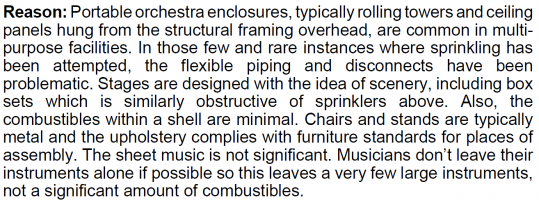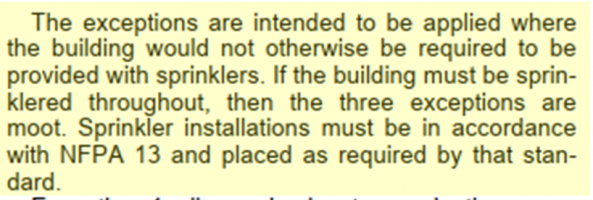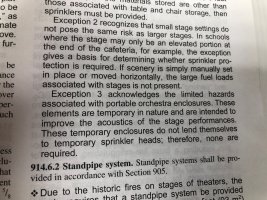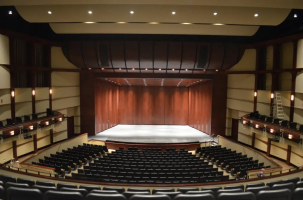bill1952
SAWHORSE
This is one of those why now questions but the 2003 code change to add exception 3, for which I was the proponent, was fairly simple. There was never any question that this was allowed in all stages, whether or not the building was "sprinklered throughout". The change was accepted "as submitted" and the substantiation was:

Now, years later, I find commentary that is different from the approved code change.

Curious if folks here think the commentary is correct - it is after all a staff persons opinion and not the code - or is it justified. I don't know of a stage built since this code that is in a building that is not sprinklered throughout - that's about 50 to 60 in my practice.

Now, years later, I find commentary that is different from the approved code change.

Curious if folks here think the commentary is correct - it is after all a staff persons opinion and not the code - or is it justified. I don't know of a stage built since this code that is in a building that is not sprinklered throughout - that's about 50 to 60 in my practice.


